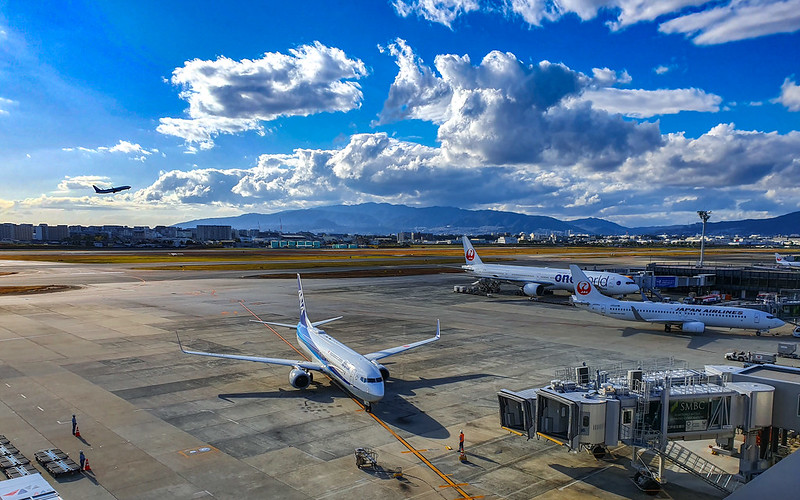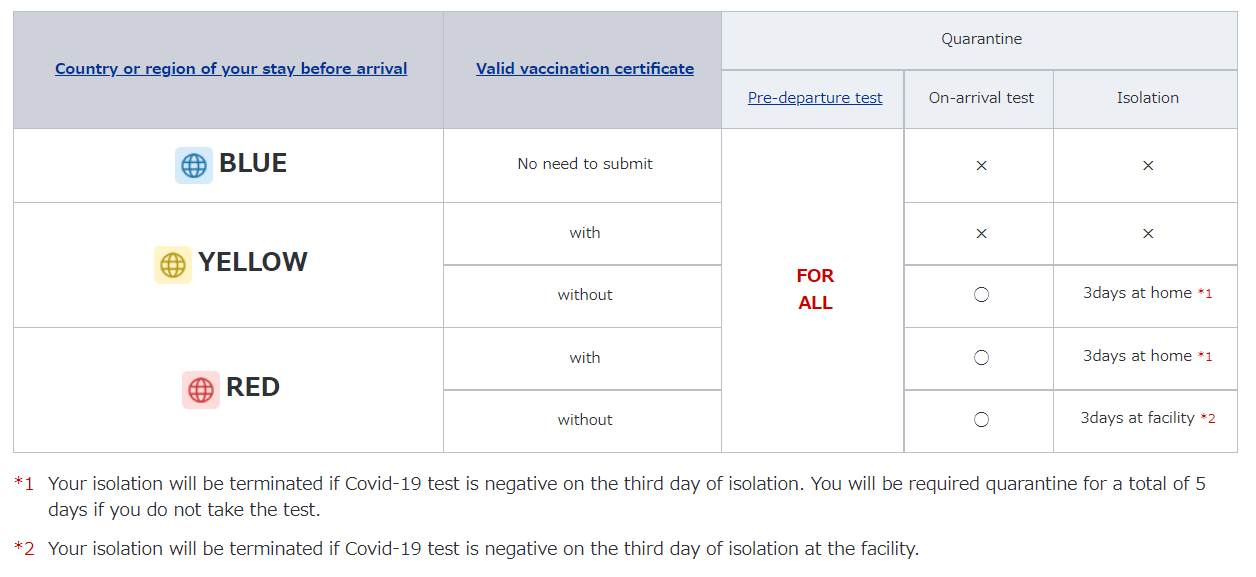
photo by Gilbert Sopakuwa
This is already the third year since the coronavirus pandemic started. The pandemic hasn’t ended yet, but many countries have already lifted their border control restrictions and been accepting international travelers. Japan, likewise, re-started accepting international tourists from June, which was restricted for a long time, with some conditions, shortened quarantine period, and introduced measures to ease the disembarkation procedures. So, as of August 2022, what is Japan’s border control like?
Who is permitted to enter Japan now?
The Japanese government had restricted tourists entering the country for a long time, but it was lifted for a certain group of tourists with conditions in June this year. Presently, in addition to Japanese citizens and long-term visa holders returning to Japan, the following types of people are permitted to enter Japan.
- Foreign nationals newly entering Japan for a short-term stay (less than three months) for purposes including business and employment
- Foreign nationals newly entering Japan for a short-term stay for tourism (only when a travel agency among others organizing the trip serves as the receiving organization of the entrants)
- Foreign nationals newly entering Japan for a long-term stay
International tourists are permitted to enter Japan only if they come to Japan on a tour arranged by a travel agent and have an organization accept them in Japan. Also, all travelers must obtain valid visas beforehand no matter what their purposes of entry are. Before the coronavirus pandemic, the visa waiver program allowed 90day stay in Japan without obtaining a visa for foreign nationals from certain countries, but this special treatment has been discontinued.
Departure country classification and isolation period

Presently, countries are classified into three groups: blue, yellow, and red, according to the situations in each country. Travelers are to submit required documents depending on which country they spend the time in before they come to Japan. For example, travelers from the blue countries are exempt from isolation on arrival, submission of a pre-departure test result, and PCR test at the airport. Check to which category the country you stayed in belongs on the MHLW website. At present, only 2 countries are classified as Red: Albania and Sierra Leone, and all the rest are classified as Blue or Yellow. Travelers from Yellow countries are exempt from submitting a PCR test at the airport and a 3-day quarantine period after arrival.
Required documents
As previously mentioned, all foreign nationals must obtain a visa before traveling to Japan. Also, no matter if you are returning to, re-entering, or newly entering Japan, a pre-departure test certificate of a negative result that was tested within 72hours before departure must be submitted. Other than that, what document you are required to submit depends on the country or region you stayed in. You may need to submit:
- Pre-departure test certificate with a negative result (Required for all)*
- Questionnaire (Required for all)
- A certificate of vaccination (For those who are required isolation)
- Written Pledge (For those who are required isolation)
*From September 7, 2022, travelers from countries where the omicron variant is dominant will be exempt from submitting a pre-departure test result.
Use Fast Track
Before you travel to Japan, whether you are a returner or a new entrant, register with “Fast Track” beforehand in order to handle part of the quarantine procedures. Even if Fast Track is not mandatory, it will definitely help you to shorten the time for you to go through the quarantine process at the airport. You can register with Fast Track via MySOS app or MySOS website. In this section, we will look at the transactions using MySOS app.
- Install MySOS app:from the MHLW website
- Open the registration screen: Tap the “Pre-registration for quarantine procedures” button.
- Register required documents with MySO: Follow the instructions on the app to register responses for your questionnaire, Pledge, vaccination certificate (select “Will register” or “Will not register”), and test result (for test done within 72 hours prior to your flight departure).
- Review process: After the documentation review at our Center is complete, the app screen will change to either green or blue.*
- Show your MySOS screen when you enter Japan: Blue screen proves that you have all the required documents registered. If your screen is yellow, you can just show it to complete these steps.
*A Yellow screen indicates that you haven’t completed registering all the required documents, therefore you will need to submit the missing ones manually at the airport. A red screen means that you need to re-register because the registration failed for some reason.
If you have registered via MySOS website on your computer or other devices, you can show the color of a logged-in screen at the airport the same as you show MySOS app on the phone.
Border control measures are regularly updated and may be changed without notice. Start registering with Fast Track about 2 weeks prior to your scheduled flight because if you register with Fast Track too early, you may go through some other process because of a change of rule.
Everyone, welcome to Japan again!
It is still limited to pre-arranged tours, though, Japan finally started accepting international tourists in June this year. Following this, the border control measures have been eased a lot compared to before. You still have to get a pre-departure test certificate before you fly out, but transactions at the arrival airport can be quite simple if you register with Fast Track. If you are planning to travel to Japan any time soon, you can check which group your departure county falls in on the MHLW website.
